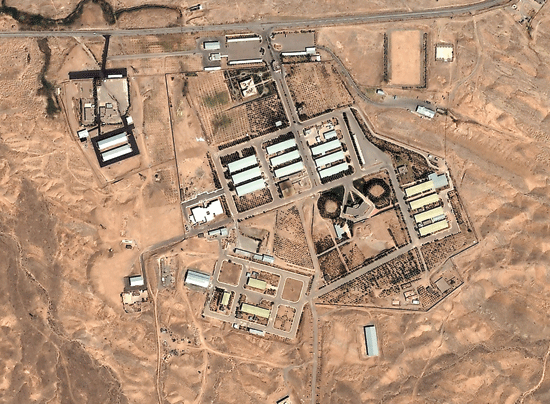

Tehran: Iran said yesterday that it independently collected samples at a suspect military site where illicit nuclear work is alleged to have occurred and later handed them to the UN’s absent inspectors.
The disclosure that international monitors were not physically present is likely to feed critics of a nuclear deal between Iran and world powers, who have poured scorn on measures used to check if Tehran’s atomic programme is peaceful.
In a mark of the high stakes at play it drew a quick reaction from the UN’s International Atomic Energy Agency, whose chief insisted that “the integrity of the sampling process and the authenticity of the samples” was not compromised.
The samples were taken under “established procedures”, IAEA director general Yukiya Amano said, noting “significant progress” is being made in its long-running probe of whether Iran ever sought to develop a nuclear bomb.
The site at Parchin, east of the capital Tehran, has been at the centre of international scepticism of Iran’s activities. Iran says accusations from Western intelligence agencies — including that it conducted explosives tests at Parchin — are groundless and based on malicious information provided by its enemies.
The sample taking is linked to a so-called roadmap with a December 15 deadline by when the IAEA says ambiguities about past possible military dimensions of Iran’s nuclear activities must be resolved. Much work remains to be done on that report, Amano said.
Iran’s environmental sampling from specific parts of the Parchin complex took place in the past week. “It was done by Iranian experts, in the absence of IAEA inspectors,” said Behrouz Kamalvandi, spokesman for Iran’s Atomic Energy Organisation.
IAEA and Iranian officials have previously said monitoring can be verified in real time by satellites and sophisticated geolocation technology. Amano, speaking a day after he visited Tehran and was unexpectedly granted access to Parchin, appeared to reiterate that capability while acknowledging Iran’s recent role.
“In the case of Parchin, the Iranian side played a part in the sample-taking process by swiping samples,” Amano said in Vienna, adding his experts would analyse them in the coming weeks.
“The agency can confirm the integrity of the sampling process and the authenticity of the samples, which were taken at places of interest to the agency at the particular location in Parchin.”
He did not name the place, but did say that he and Tero Varjoranta, the IAEA’s chief inspector, visited a building previously only monitored by satellite technology, and indicated it had been altered.
“Inside the building, we saw indications of recent renovation work. There was no equipment in the building,” he said before appearing to criticise past construction work at Parchin.
“As I have stated in my reports.. the extensive work that has been conducted at the location since early 2012 undermines the agency’s ability to conduct effective verification there. “Our experts will now analyse this information and we will have discussions with Iran in the coming weeks.”
AFP




